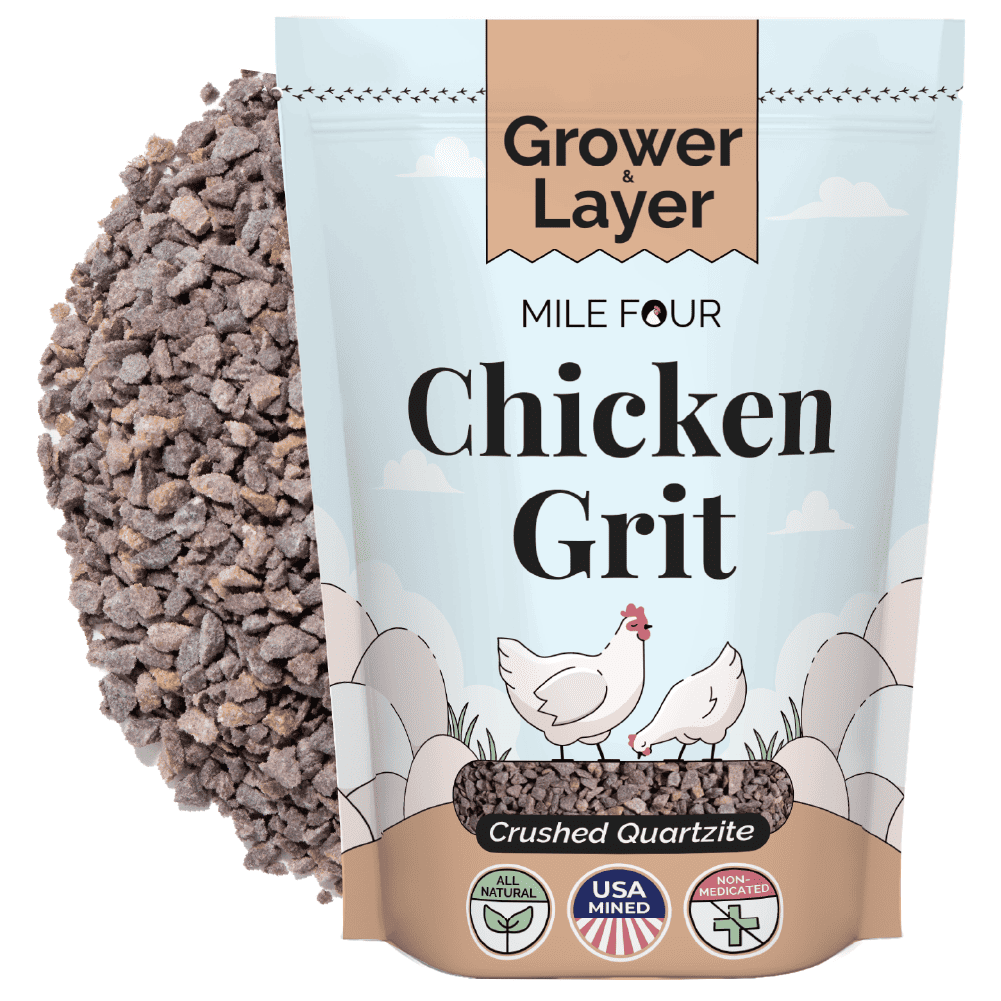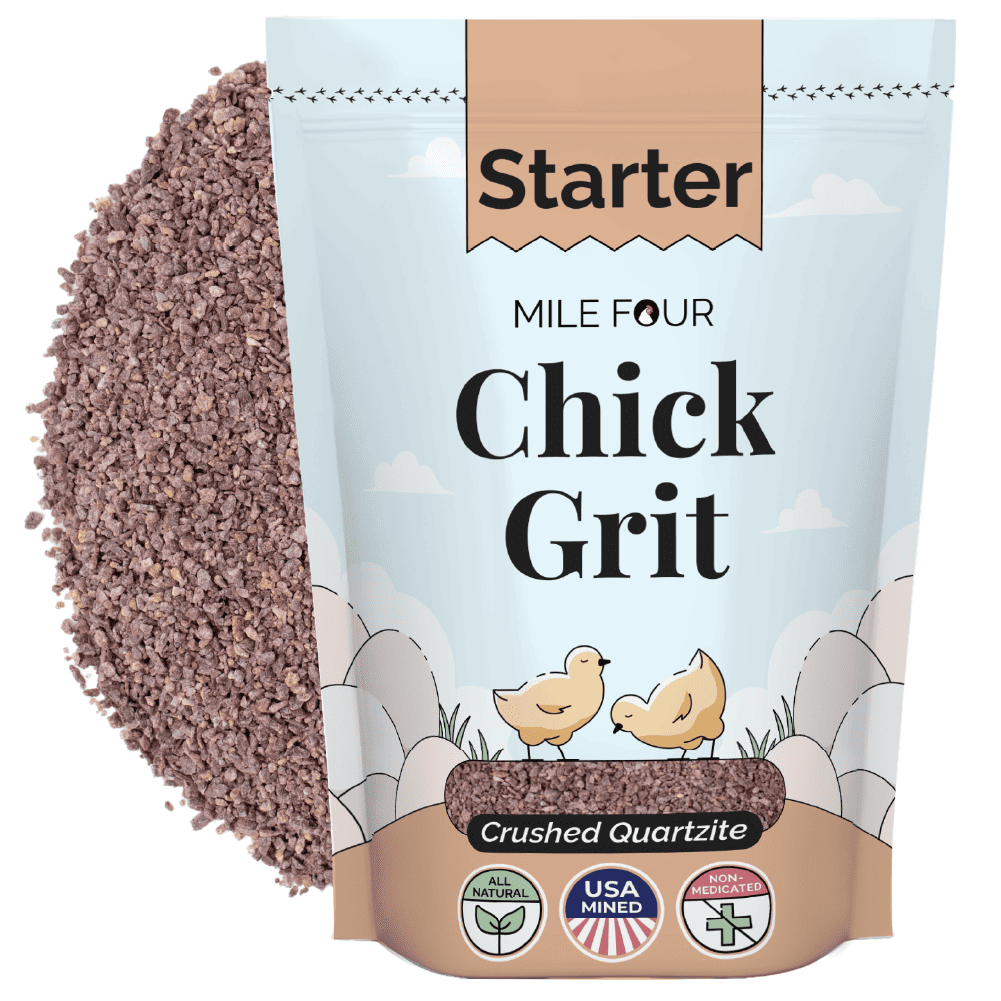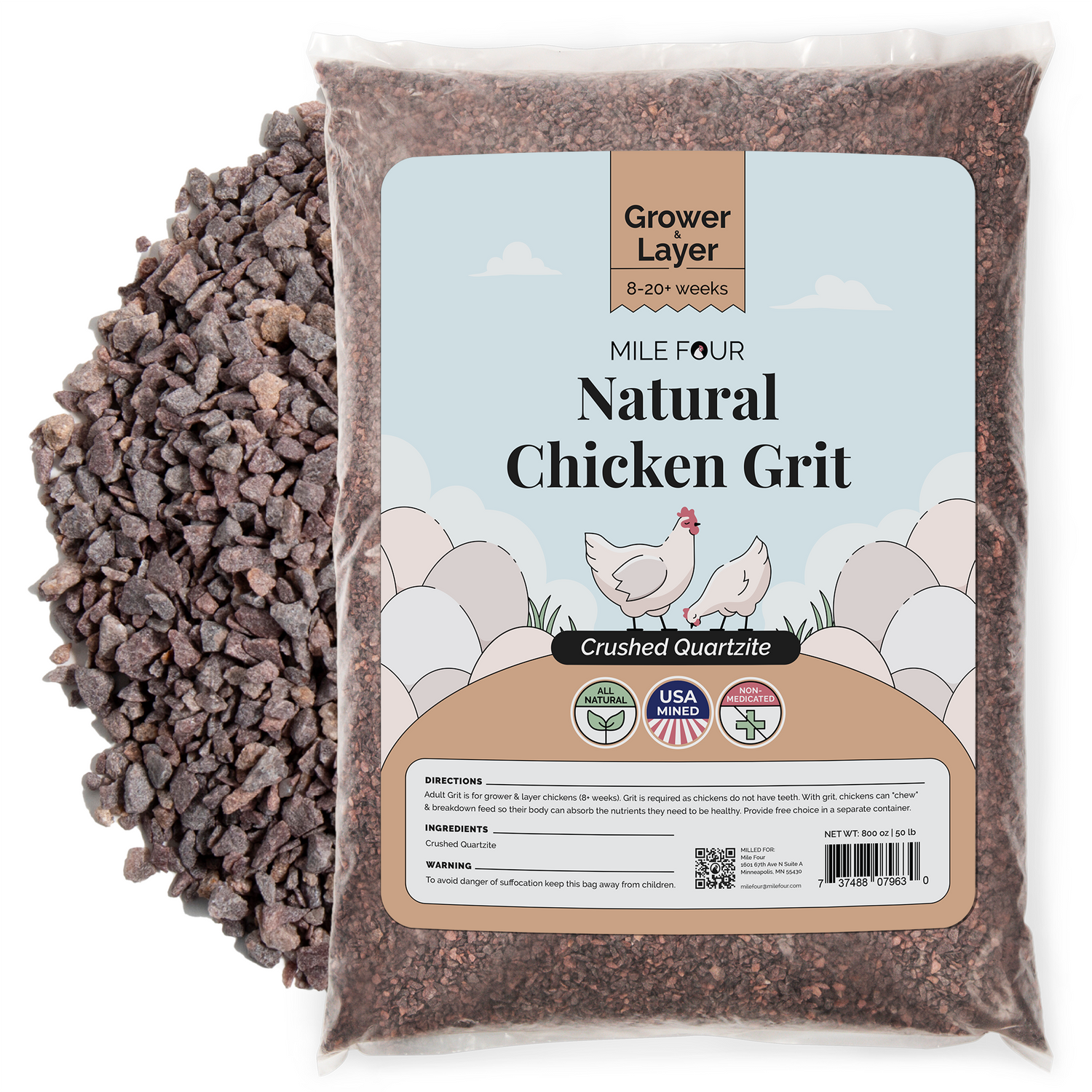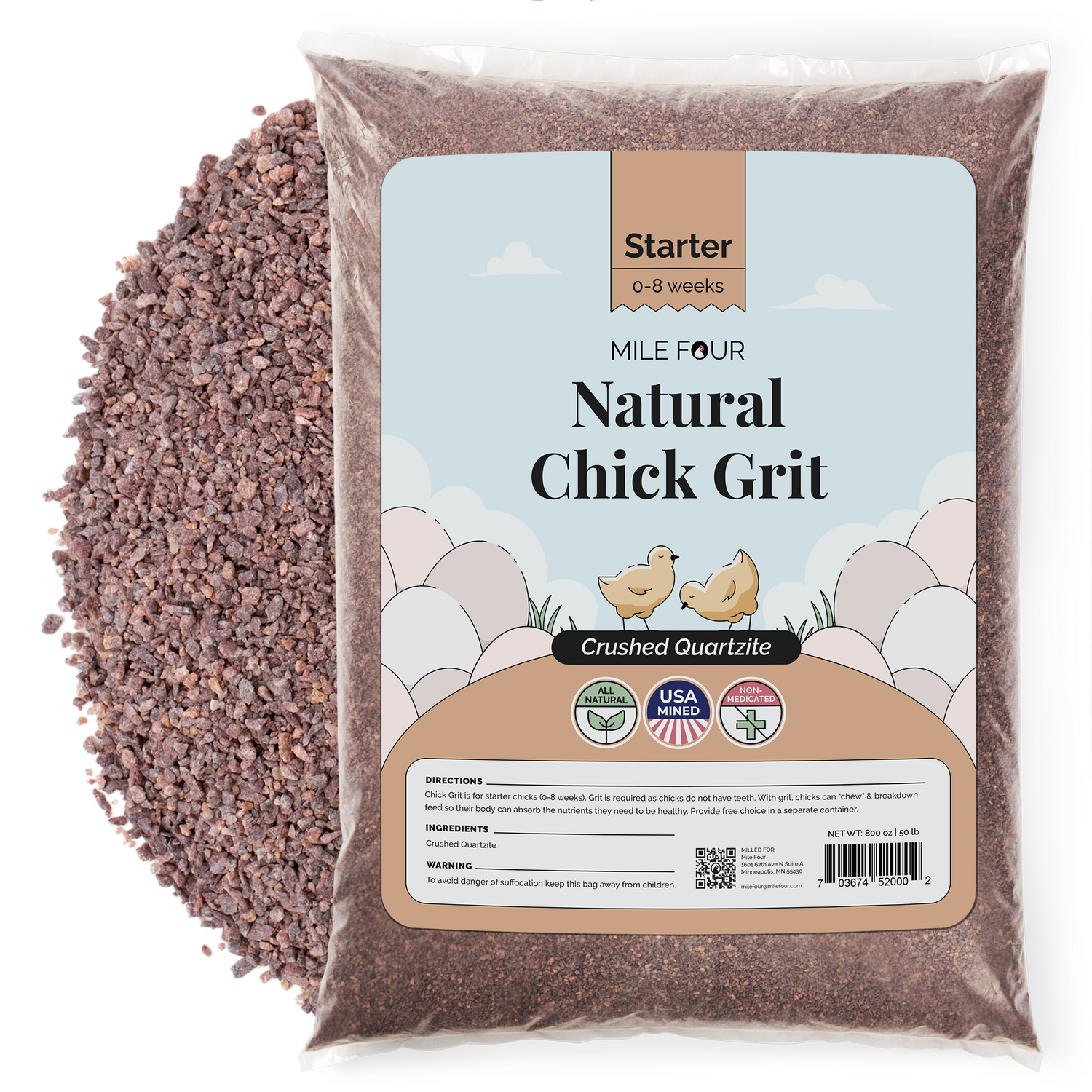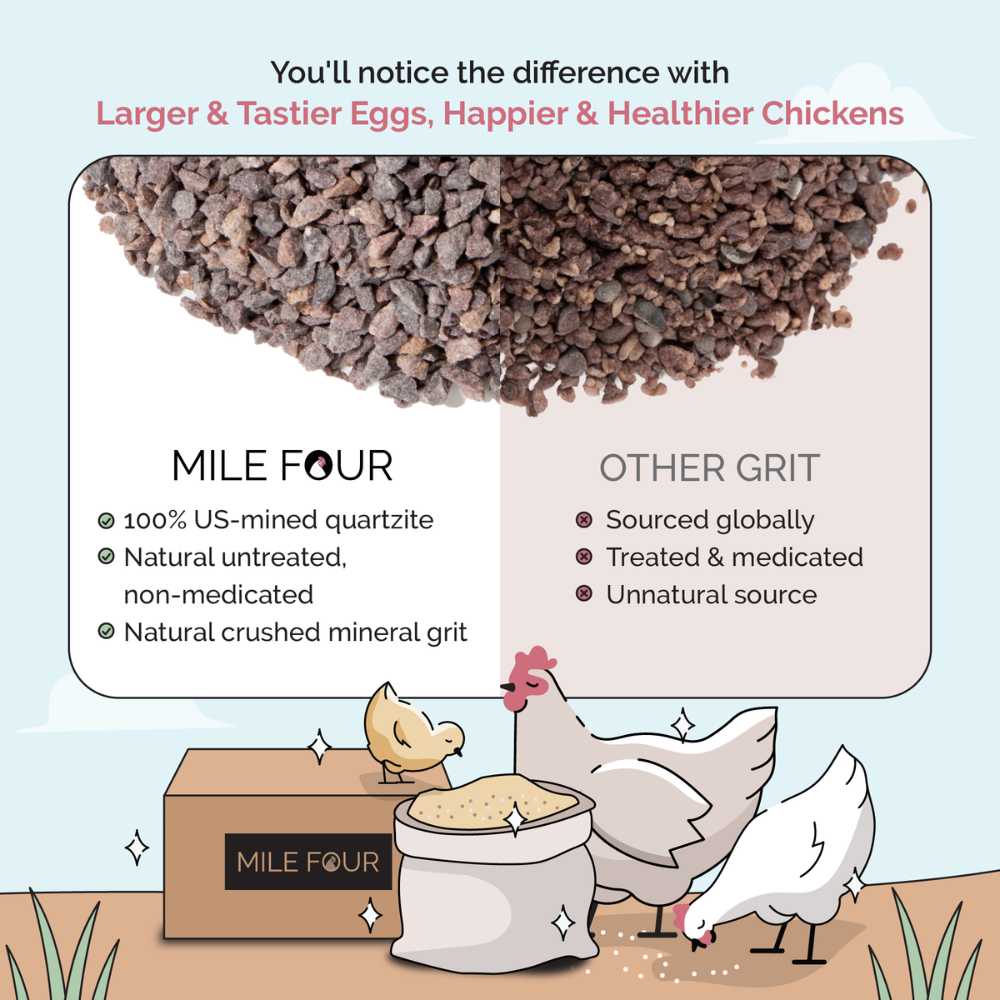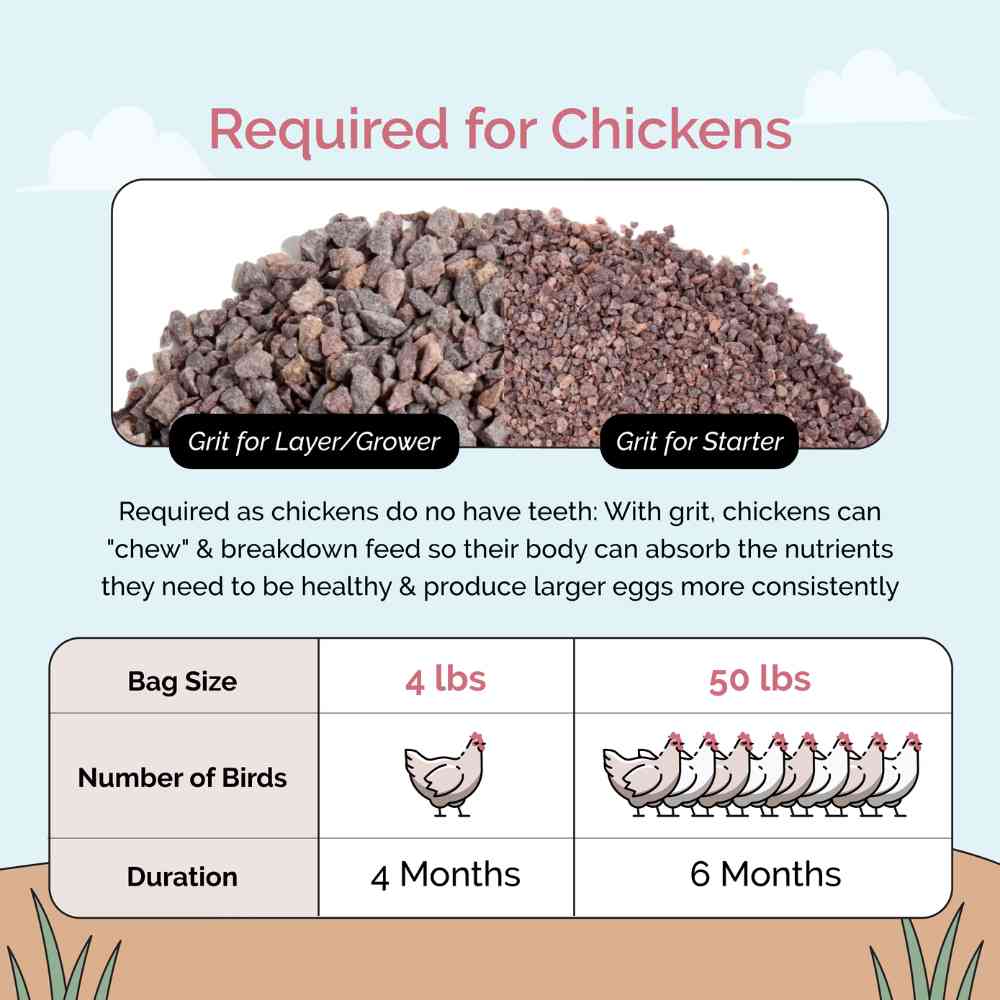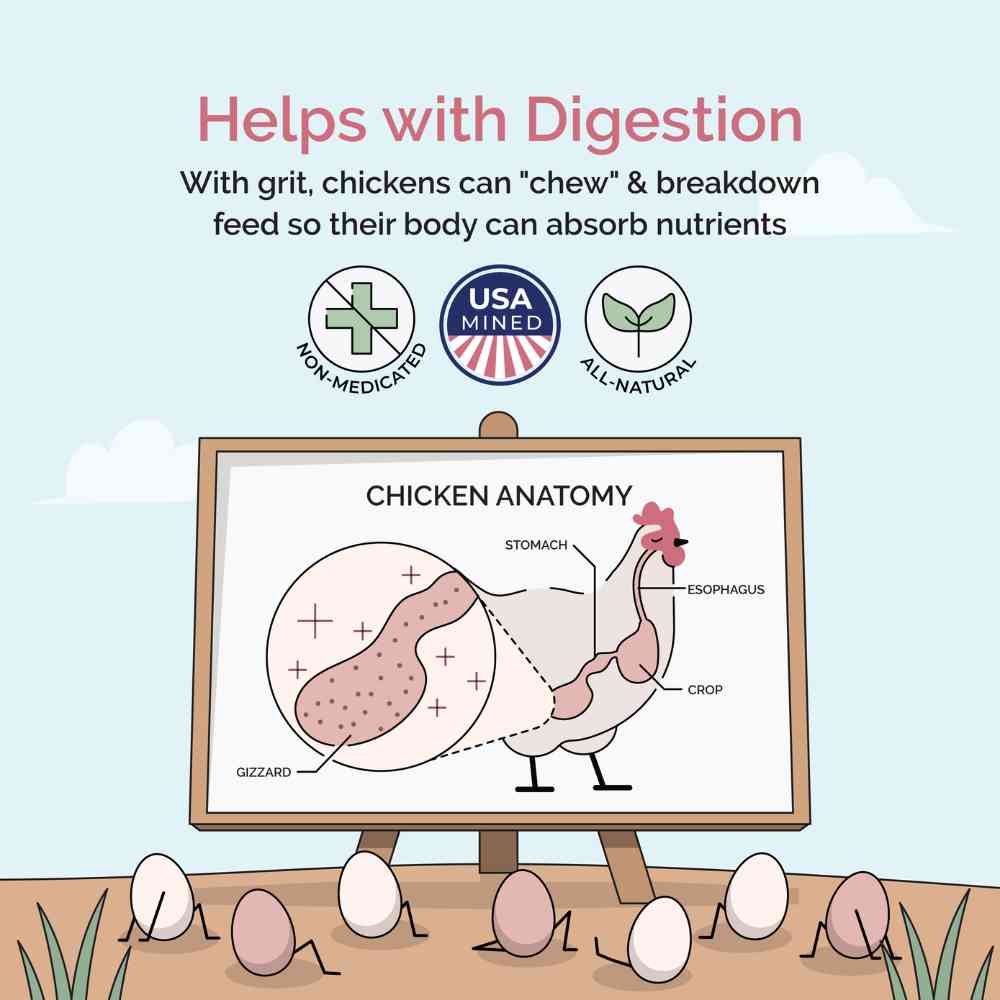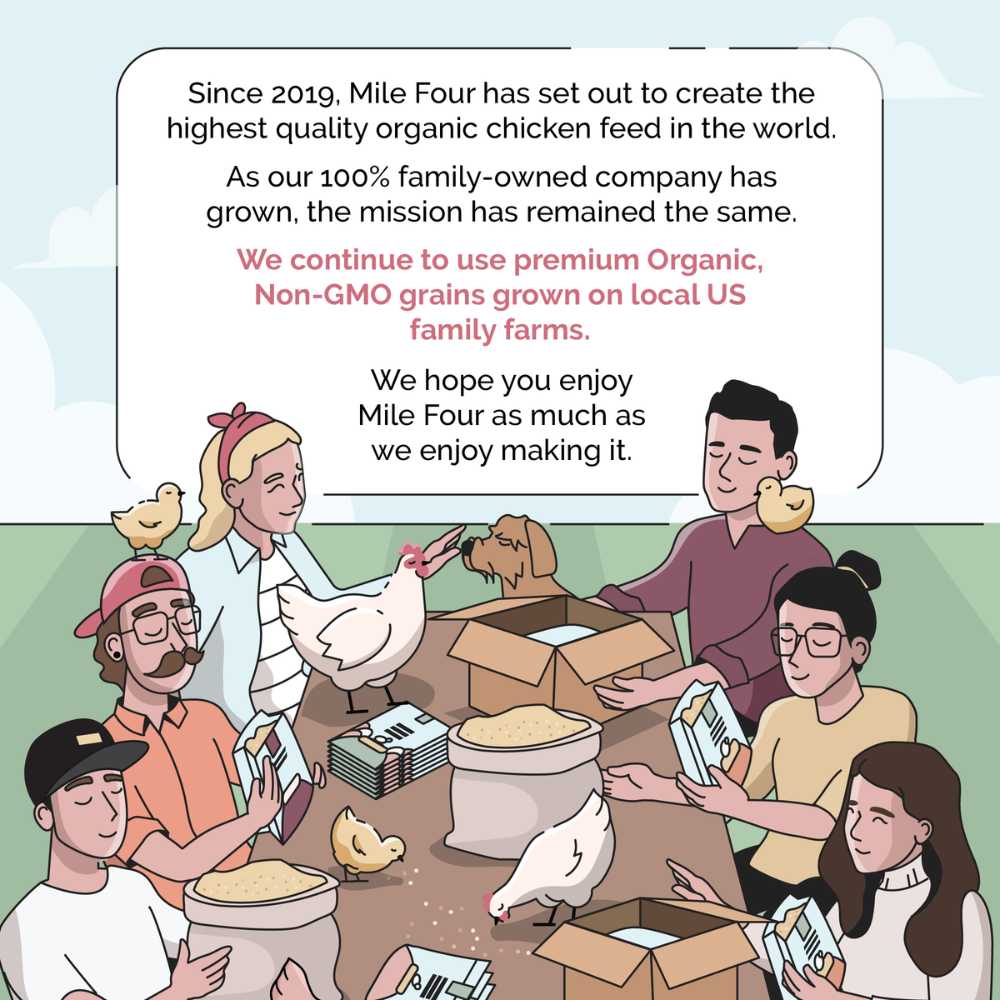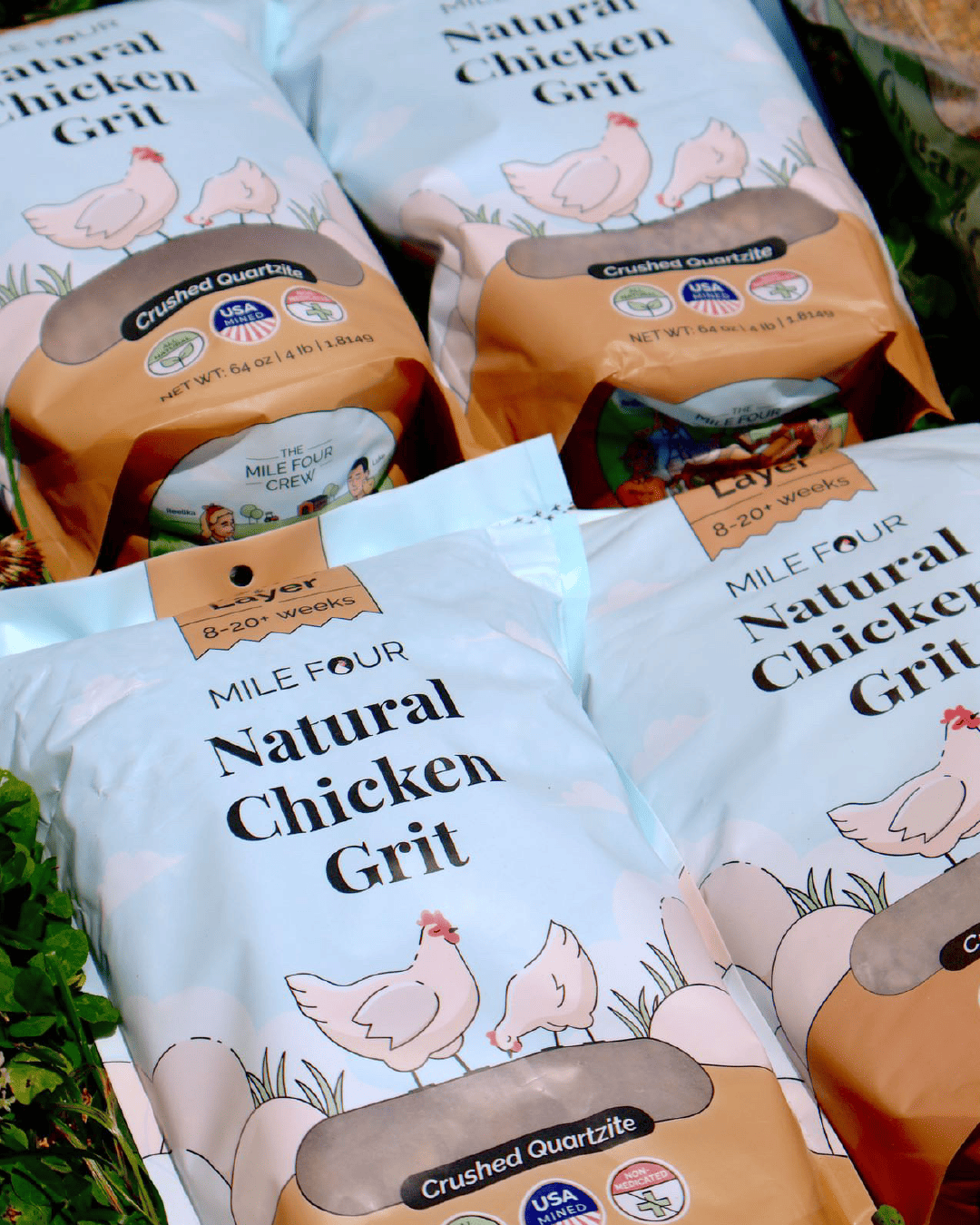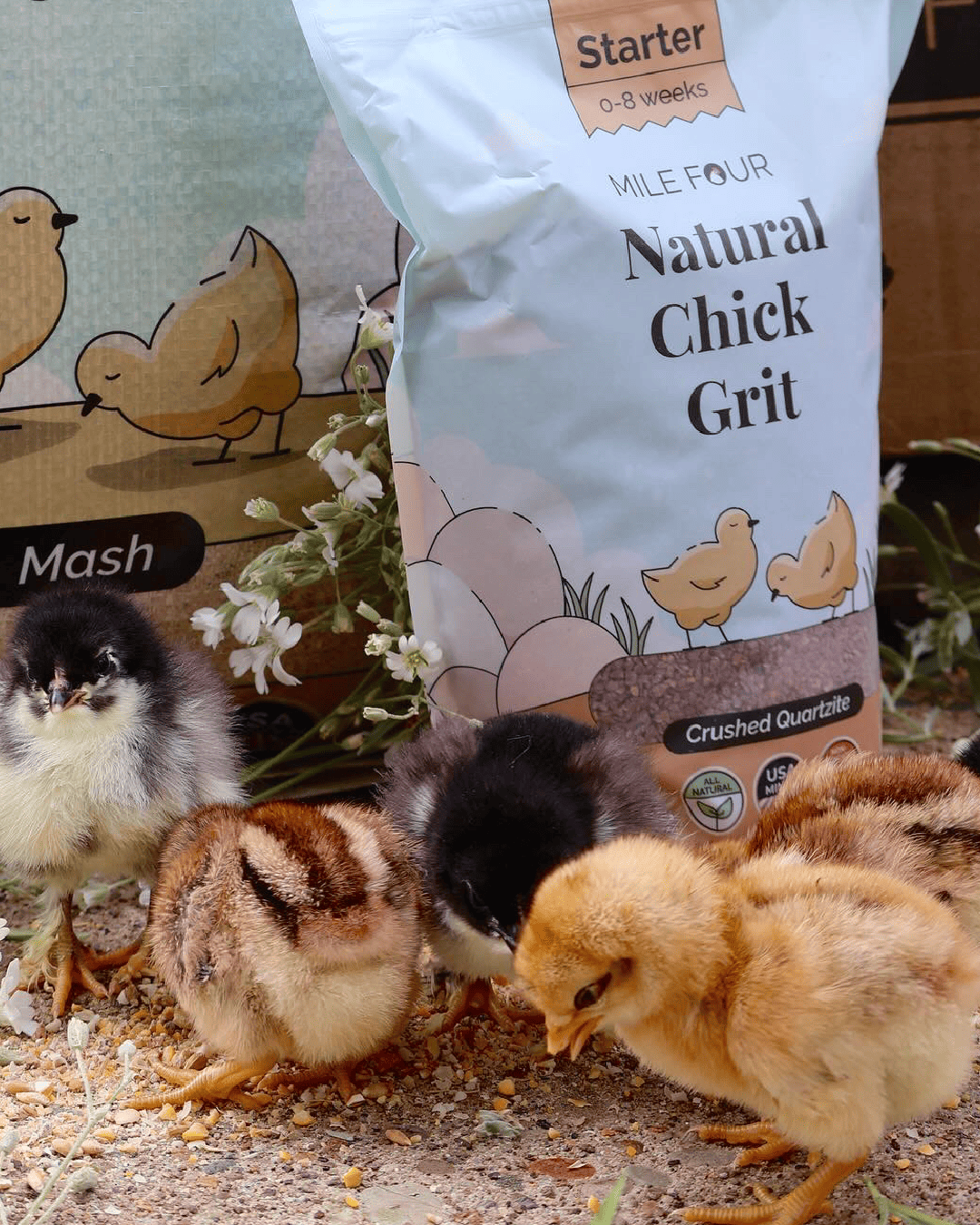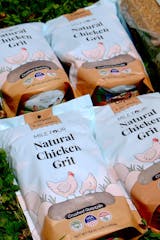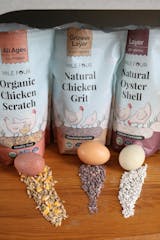Chicken Grit
- Regular price
-
$19.99 - Regular price
-
- Sale price
-
$19.99
Couldn't load pickup availability
Why Buy
Chickens don’t have teeth—so grit is essential. It allows birds to “chew” & break down their feed naturally, improving digestion and nutrient absorption for better health & consistent egg production. Mile Four Grit is made from 100% natural quartzite, a hard, pure rock that helps grind food efficiently in the gizzard. With no additives or fillers, it’s a simple, effective way to support strong shells, healthy digestion, & happy chickens.
Key Features:
- Two Grit Sizes: Starter Grit for chicks 0–8 weeks; Layer & Grower Grit for birds 8+ weeks.
- Essential for Digestion: Helps chickens process feed efficiently & absorb nutrients for optimal health.
- Supports Egg Production: Promotes consistent laying & stronger eggshells through improved nutrient absorption.
- Natural & Safe: 100% quartzite grit with no chemicals, dyes, or fillers—just pure, effective rock.
Instructions for Use
-
Starter Feed
Begin with 100% Starter feed, which is high in protein to support early development. Around Week 7, start mixing 75% Starter feed + 25% Grower feed for a few days. Gradually adjust the ratio, reaching 100% Grower feed by Week 9. -
Grower Feed
Keep pullets on 100% Grower feed to support muscle growth & steady development. At Weeks 19-20, introduce 75% Grower feed + 25% Layer feed to help their bodies adjust to increased calcium levels. Increase the Layer feed portion until reaching 100% Layer feed by Week 21. -
Layer Feed
Once chickens begin laying eggs, switch to 100% Layer feed, which contains added calcium for strong eggshells. Supplemental Grit & Oyster Shell can further support shell strength. -
Oyster Shell & Grit
Serve Oyster Shell and Grit in separate small containers, placed near the feeder but never mixed into the feed. Chickens will eat Grit as needed to aid digestion & Oyster Shell to boost calcium for stronger eggs. Refill weekly & keep both dry & accessible at all times.
For a smooth feed transition, adjust the mix gradually, monitoring flock’s appetite & digestion. A balanced chicken diet at every stage ensures healthy growth, optimal egg production, & strong immune function.
Check out our Chicken Feed Guides:
How to Transition by Chicken Age
How to Transition from Old to New Feed
How to Ferment Chicken Feed
Free Shipping & Risk Free Trial
- Free Shipping: FedEx (1-3 day), 2pm daily cutoff
- Risk Free Trial: If your chickens don't love their 1st bag, it's on us.
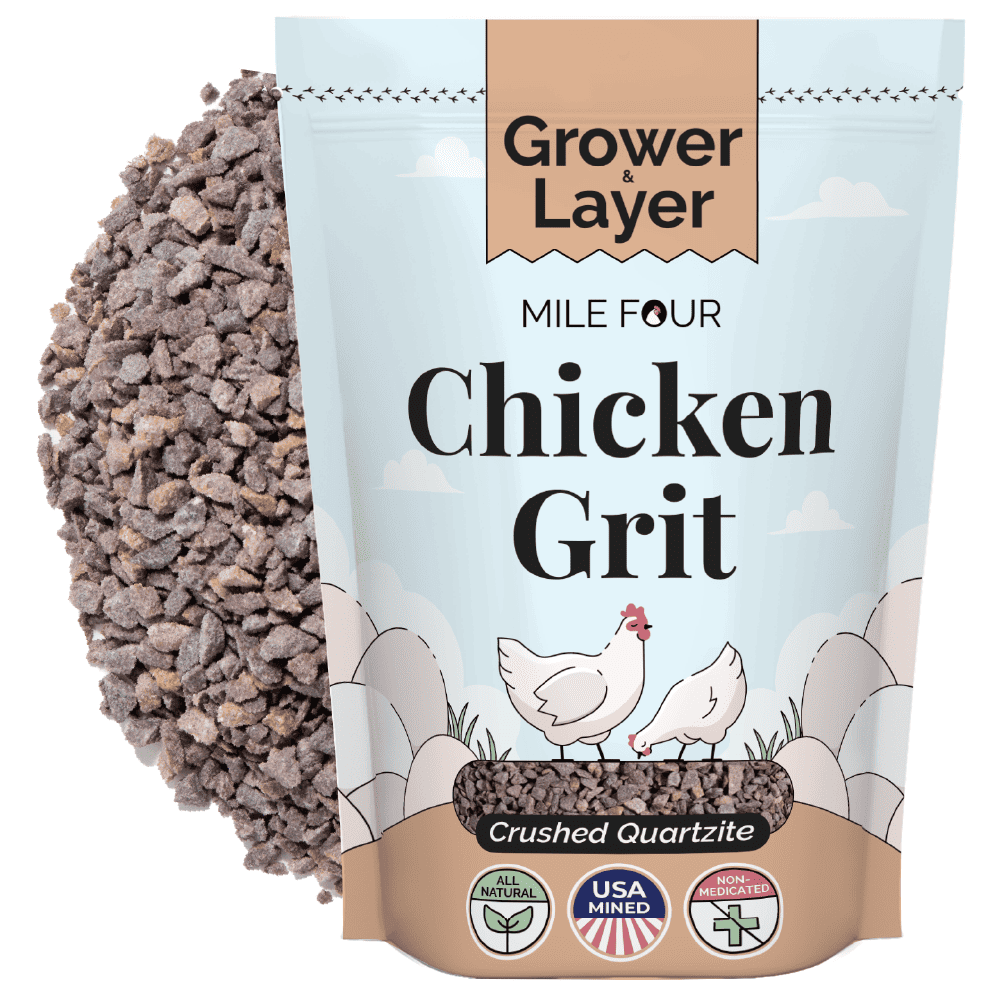
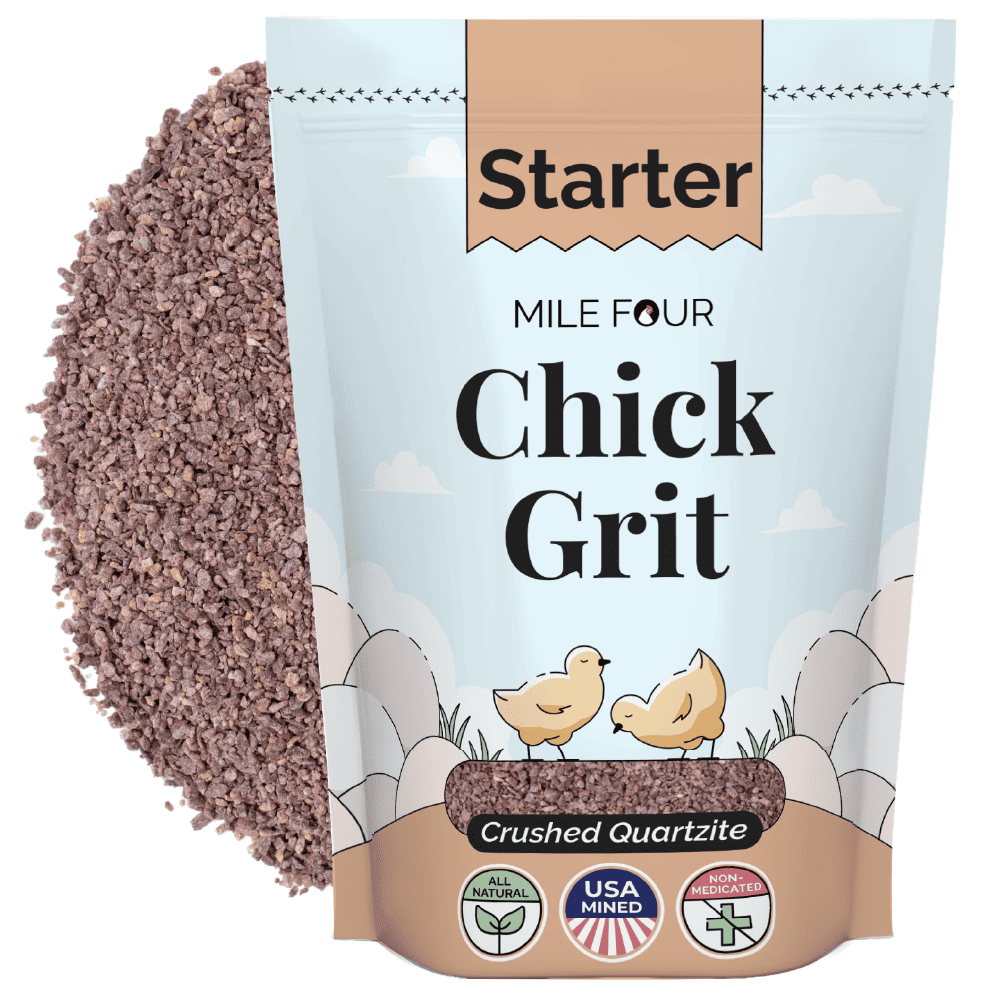
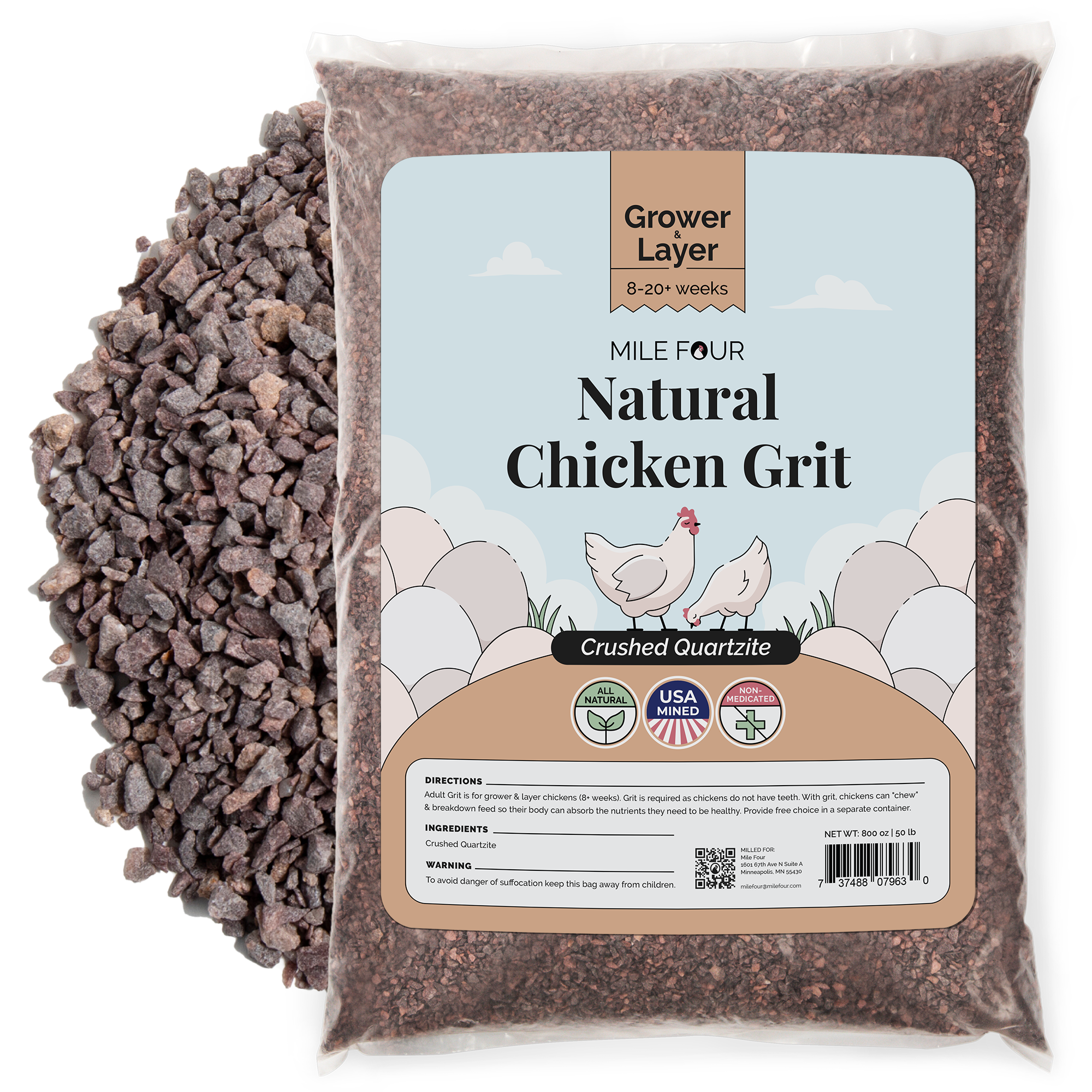
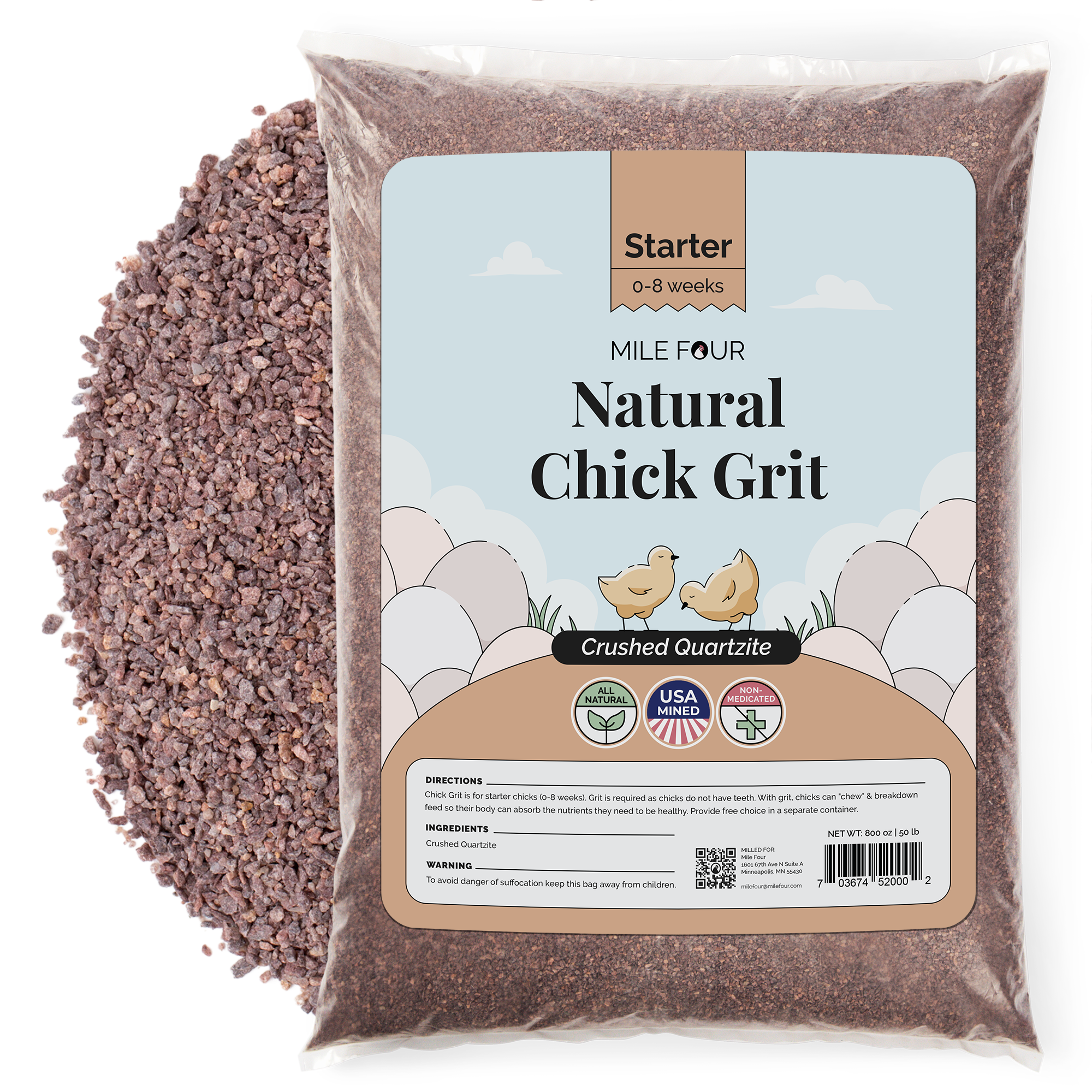
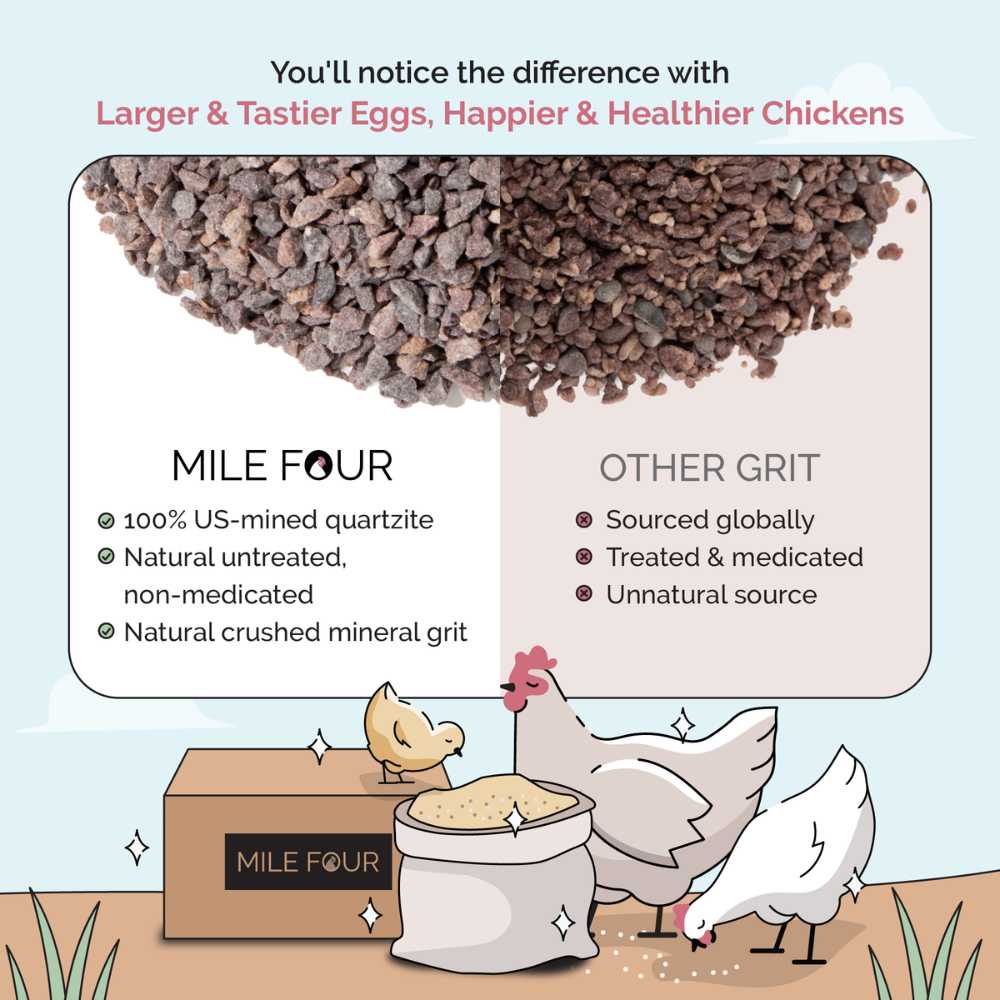
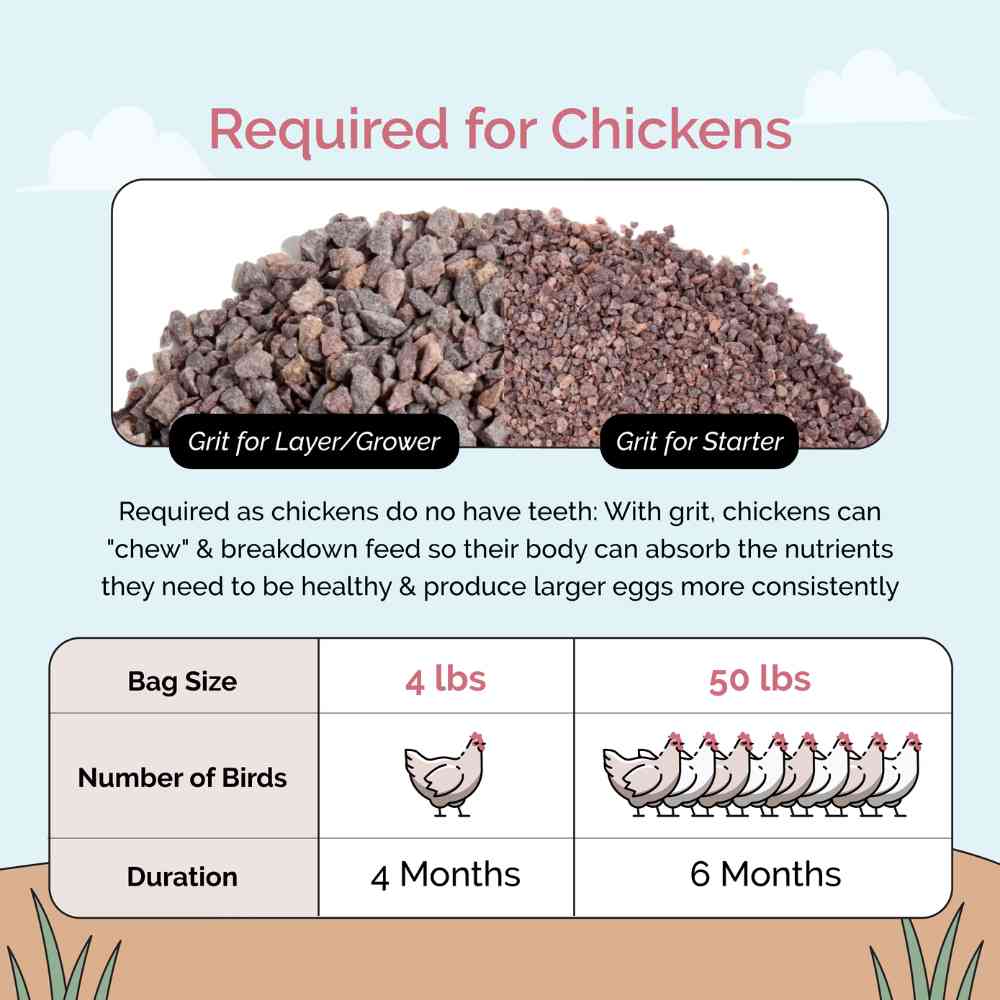

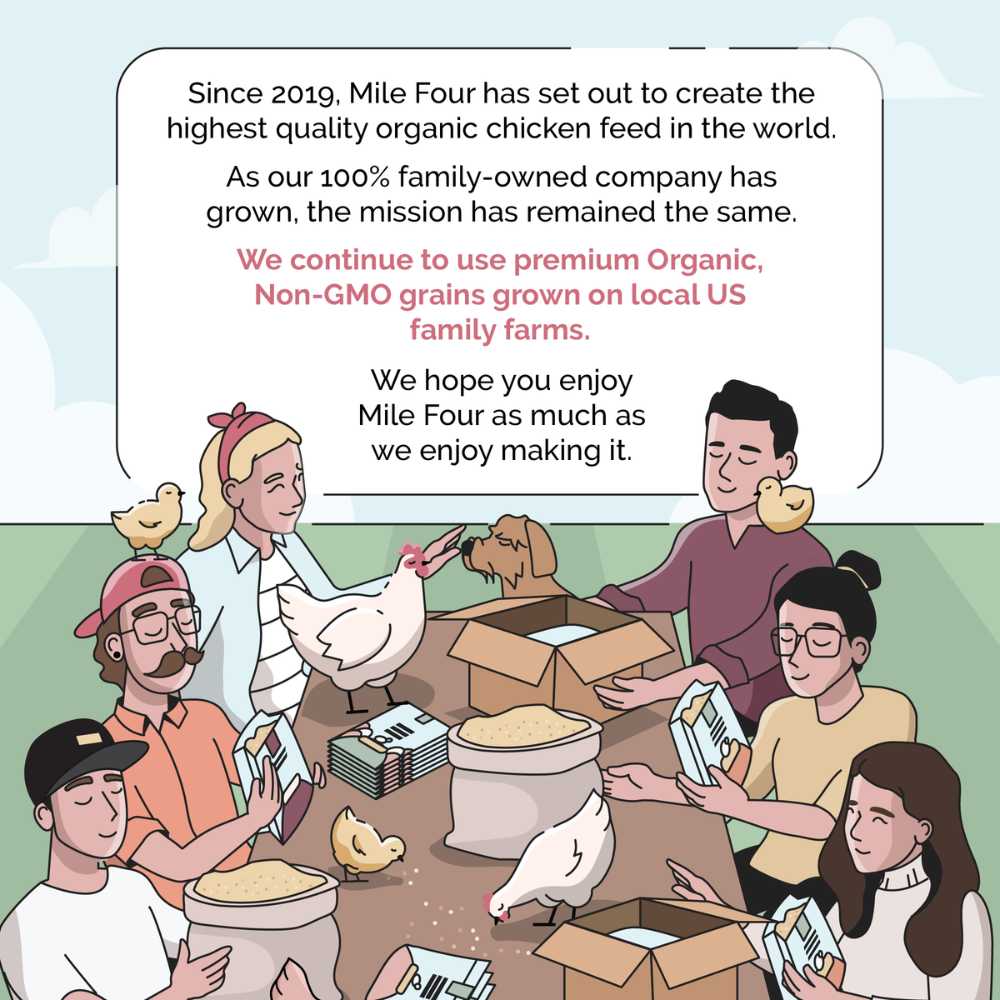
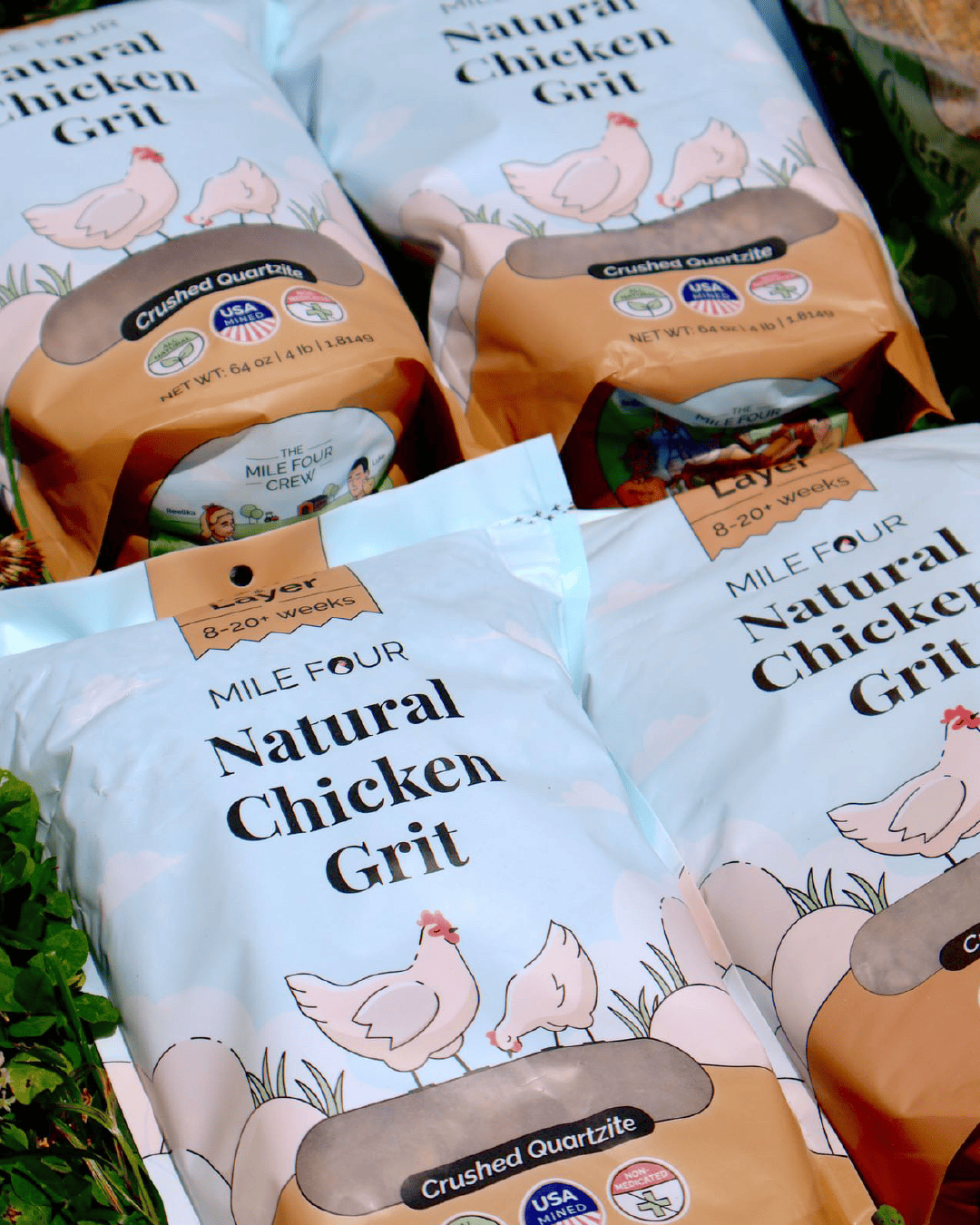
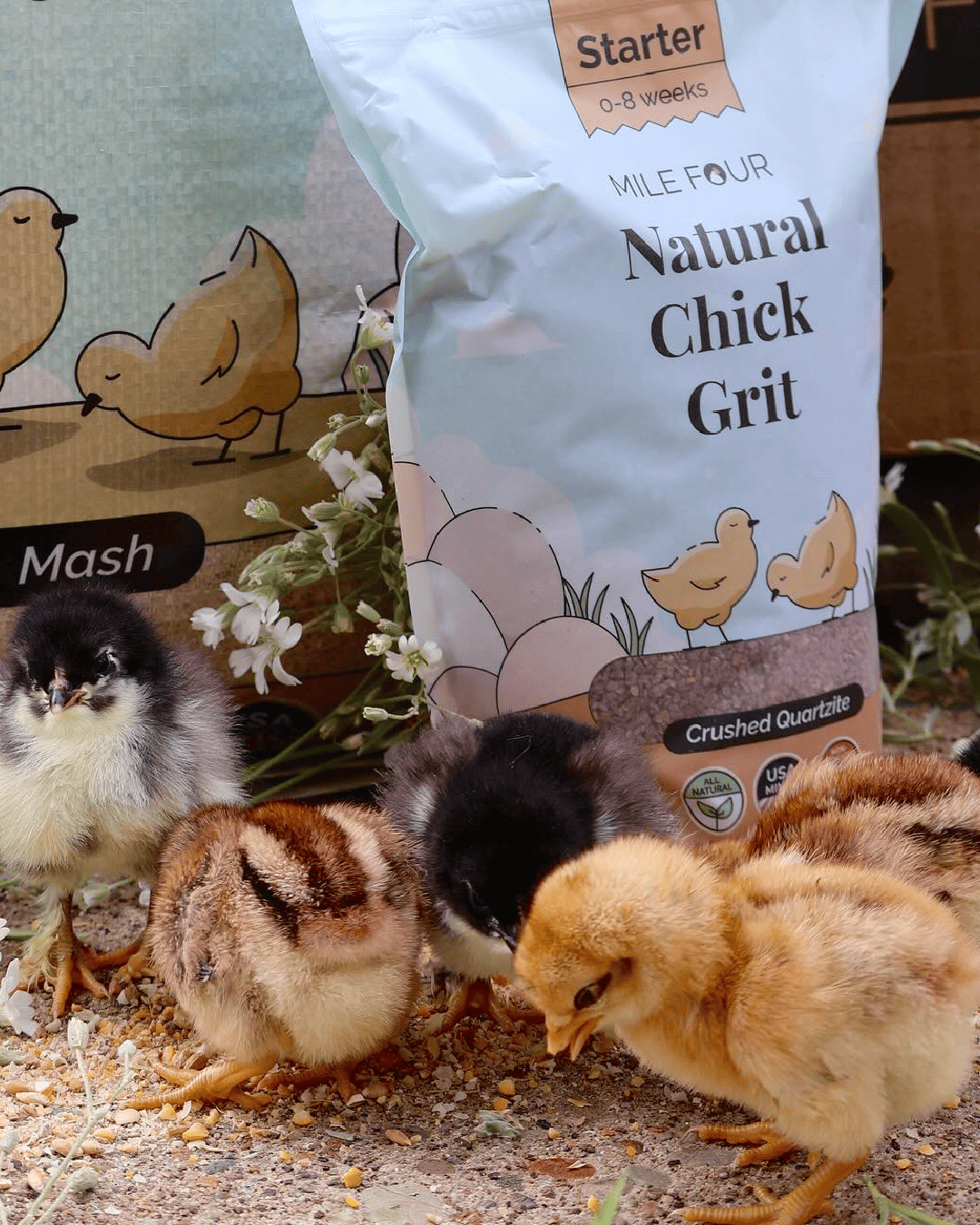


Chicken Grit
- Regular price
-
$19.99 - Regular price
-
- Sale price
-
$19.99
Larger & Tastier Eggs, Happier & Healthier Chickens
-
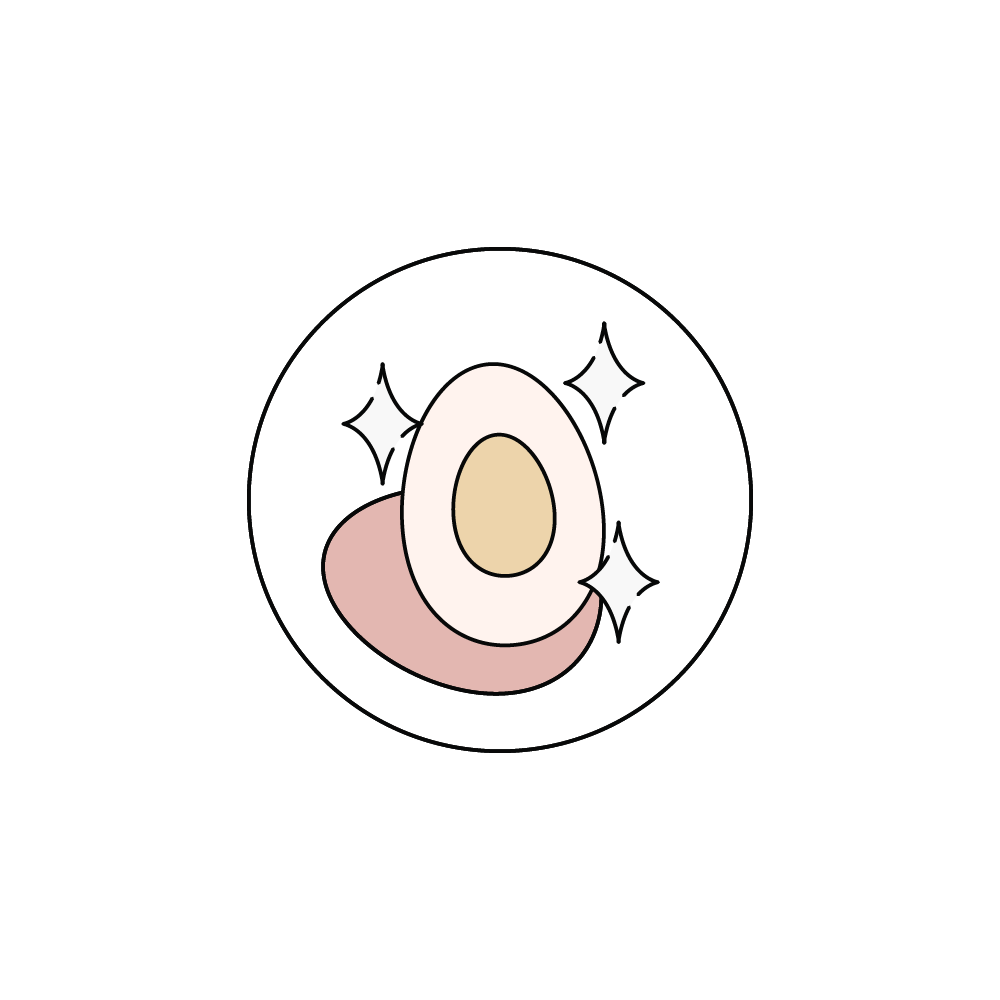
Deeper Golden Yolks
-

Stronger Eggshells
-
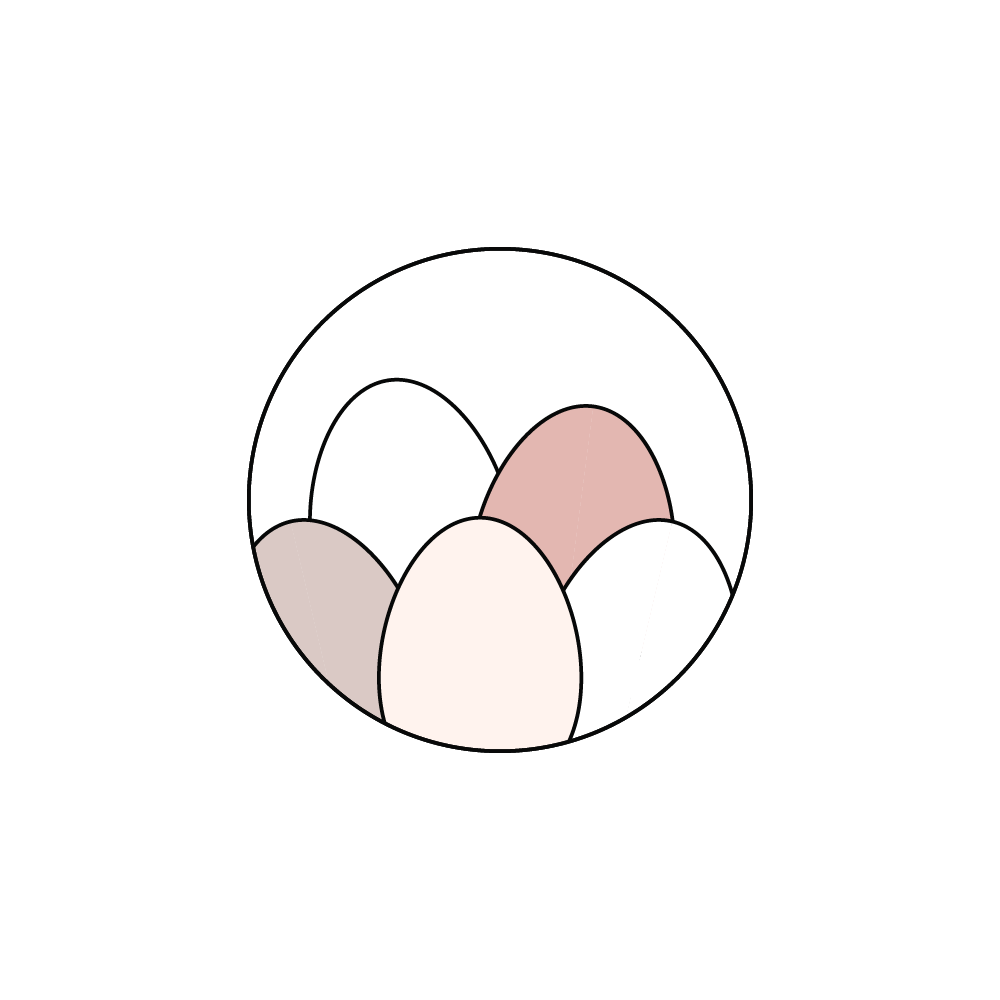
Consistent Eggs
-
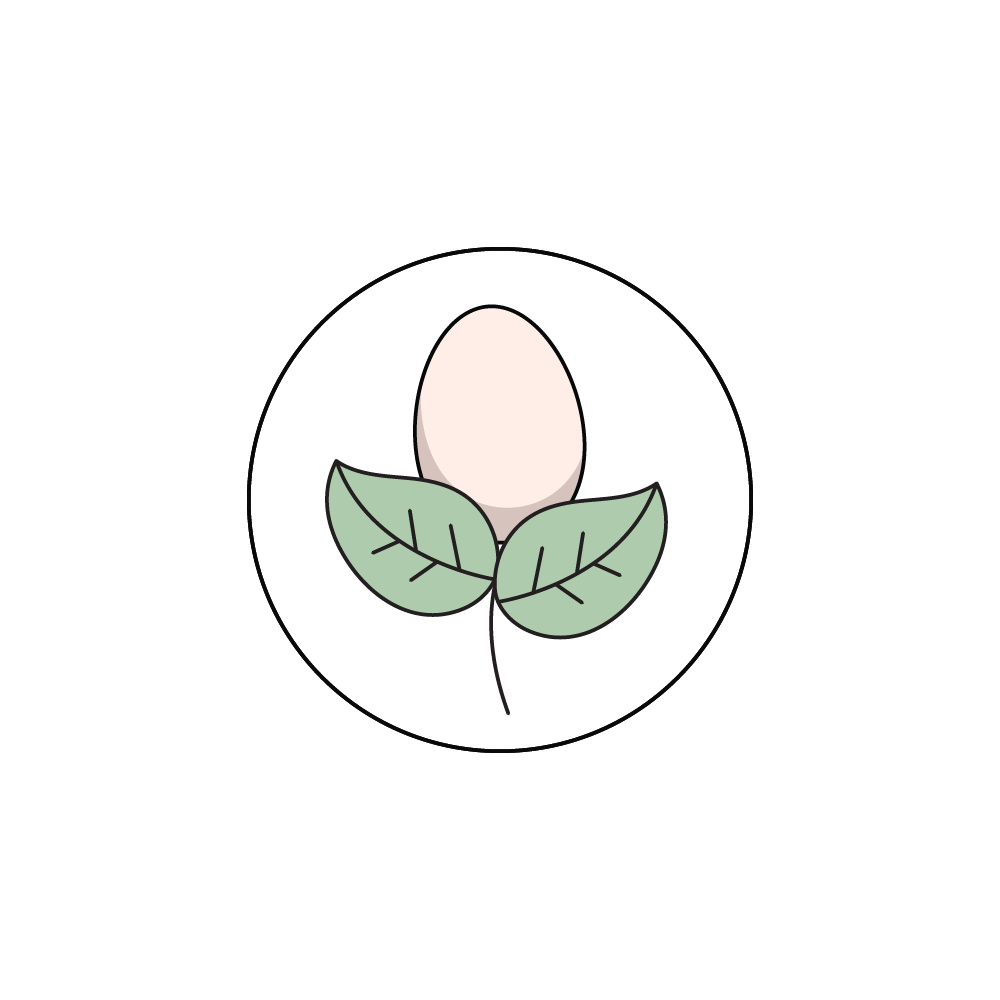
Organic Eggs
-

Higher Activity
-

Stronger Bones
-

Brighter Combs
-
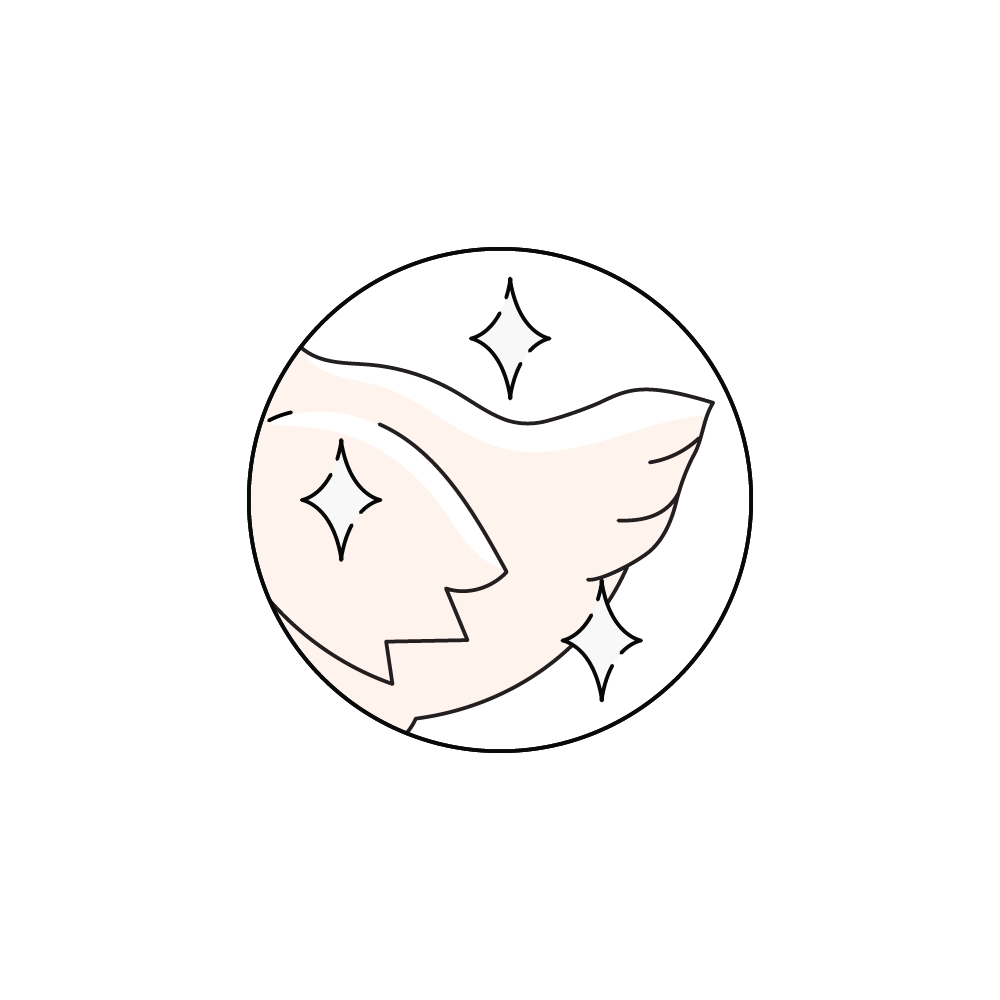
Shinier Plumage
What's in Chicken Grit?
Made with: Natural untreated, non-medicated, 100% US mined crushed quartzite, mineral grit.
Made without: Medication, treatment, foreign mines.
Natural Untreated & Non-Medicated
Natural Crushed Grit Quartzite, Mineral Grit
100% US Mined Quartzite

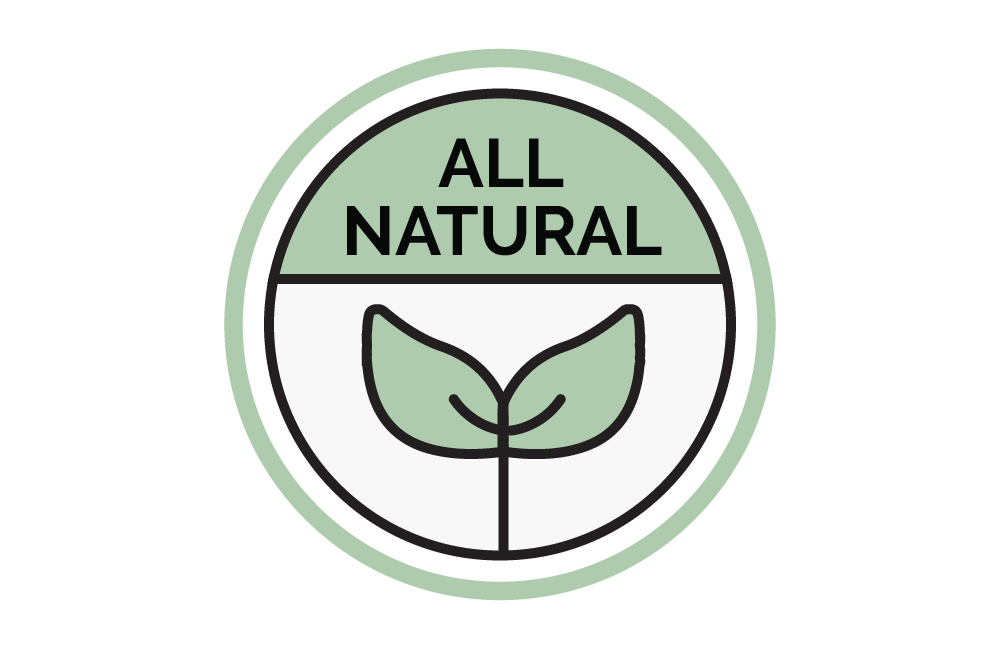

Since adding this grit to my chickens' diet, their digestion has noticeably improved. They are healthier and more active. It's an essential product for any poultry owner. Very satisfied!
My chickens love this grit. It helps with their digestion, and I've noticed fewer health issues since using it. It's a simple yet effective addition to their diet. Highly effective!


